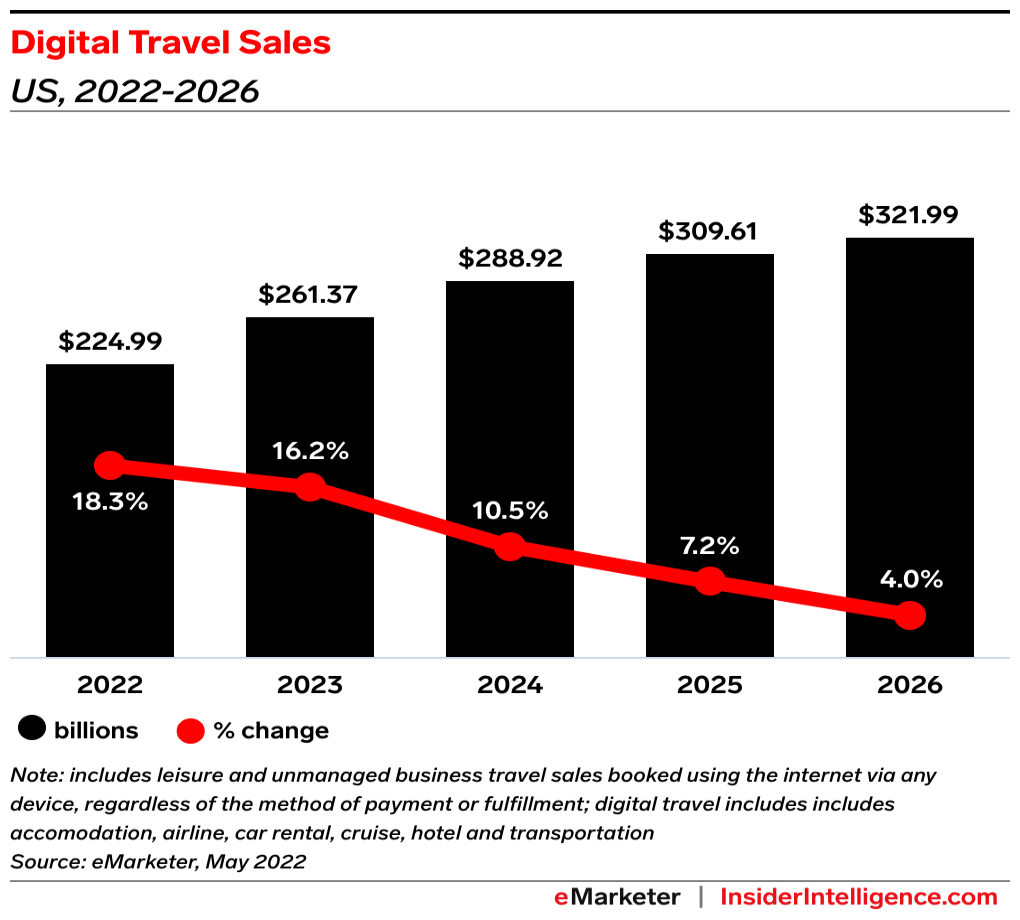Things are starting to look up for the travel industry, as Americans are gearing up for a busy summer travel season, according to AAA.
The unofficial start of summer, Memorial Day Weekend, will see an estimated 42.3 million Americans travelling 50 miles or more from home, a 7% increase over 2022, according to a new forecast released by AAA.”This is expected to be the third-busiest Memorial Day weekend since 2000, when AAA started tracking holiday travel,” Paula Twidale, AAA Travel’s senior vice president, said in a statement.
And it won’t stop there. “More Americans are planning trips and booking them earlier, despite inflation,” Twidale added. “This summer travel season could be one for the record books, especially at airports.” Surging demand, higher jet fuel prices and lower capacity continue to pump up airfare prices, but this proving to not be a deterrent. On the other hand, gas prices are lower than they were last summer, so road travel should be strong also.
Even though we are living in uncertain economic times, digital travel sales are predicted to rise through 2026. After stocking up on everything from electronics to furniture during the pandemic, people are now making travel a priority in their budgets.

If you’re in the digital travel marketing business this is good news and it opens many opportunities for you, but it’s still important to craft smart, effective strategies.
Marketing in the travel industry is complex and fragmented. While 90% of travel customers do research online, only 82% will end up making their bookings via those same digital channels. Despite sites like Booking.com and TripAdvisor getting millions of site visits a month, hotel websites continue to garner two-thirds of all bookings. And in general, 63% of the trillion dollar travel market exists online, but the bulk of consumer research is spread across multiple digital and physical channels. Therefore, it only makes sense to have an omnichannel strategy to remain in the consumers’ line of sight.
Currently, these are some of the best/most effective trends in digital travel marketing, in no particular order:
- Apps and mobile friendly websites – A great interface is of the utmost importance. Key questions to ask yourself – Is it user-friendly? Is information easily accessible? Does it load quickly? Can I book directly on it? Does it show me accurate maps? Can I easily see reviews?
- Optimization for Google and SEO – This is important for any industry. Conduct keyword research to understand the terms your audience is searching for, and then optimize your website’s content, meta descriptions, and alt tags accordingly.
- Using available data and embracing personalization – This is also important in any digital marketing strategy. By leveraging user data, you can create tailored experiences that match the interests and preferences of your target audience. Use retargeting campaigns to remind potential visitors of your destination and offer them customized deals that align with their interests.
- Inbound marketing and content, including user-generated content – Content is king. Content plays an important role in SEO efforts in the form of blogs, infographics, videos, and images. It is important to create content that your target audience will find attractive. When it comes to travel companies, relevant videos on travel, and tourism work as the best SEO strategy.
- Prioritizing video – You want to dazzle consumers, so don’t be afraid to play up the eye candy. Videos offer a dynamic and immersive way to showcase your destination, and they can be shared across multiple platforms, including social media, YouTube, and your website. Consider investing in high-quality drone footage, virtual tours, and short-form videos that showcase your destination’s unique features.
- Social networks – Travel companies regularly make their presence felt on influential digital platforms such as Facebook, Instagram, and Twitter through creative messaging, carousel ads, canvas ads, and call-to-action (CTA) ads. However, you need to ensure that your services are always up to scratch and of high quality as one negative comment can take your entire marketing strategy downhill. It is also not necessary to be present on every single platform, so choose just a few that make sense for your target audience. Nothing looks worse than an account with no recent posts.
- Social media influencers – Collaborating with influencers can help you reach new audiences, build brand awareness, and drive traffic to your website. Identify influencers who align with your destination’s values and audience, and then work with them to create authentic content that showcases your destination.
You may not need to use all these tactics, but they are avenues worth exploring. Finding the right recipe for your omnichannel strategy will go a long way toward driving traffic, building brand awareness, and engaging your target audience.
Image by tawatchai07 on Freepik



